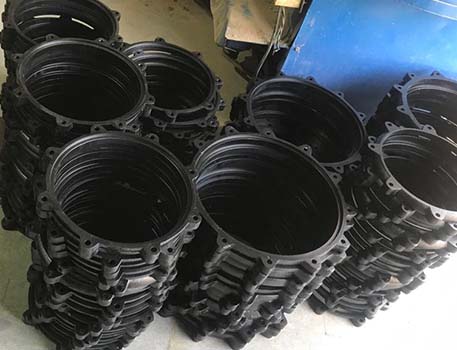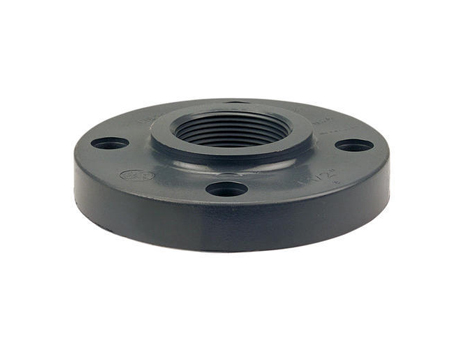info@mahavirscientific.com
Harni–VIP Road, Vadodara
Sardar Estate, Vadodara
In pipeline assembly, one piece backing flanges are used with a loose hinged insert. The following couplings are available:-
This is the most frequently used coupling since it is corrosion-resistant, light weight and does not require electrostatic earthing. The plastic material is solvent and acid resistant glass fibre-loaded phenolic resin.
This coupling has the above features with the advantage that the flanges ca7005-3, n be connected directly to other materials of construction with flanges to ISO 7005-2, PN 10, ISO 7005-3, PN 10 and DIN 2501, PN 10.
Couplings with Silumin backing flanges. These couplings are used for high temperature duties for example where lagging is fitted over the top of the coupling or where certain corrosive substances are being processed. All the above couplings are suitable for operation at 200 deg C on product side and for the full range of operating pressures. The plastic flanges are not to be used in duties where we shall be using lagging over the coupling. The standard bolts, nuts and washers are bright zinc-plated. Stainless steel bolting is available on request.
When processing the fluids which tend to crystallise or are particularly searching. It is advisable to use longer bolts fitted with compression springs. This provides additional elasticity in the joint and ensures permanent leak tightness and freedom from maintenance under extreme conditions.
PTFE is the normal gasket material due to its universal corrosion-resistance.


Locate supports in accordance with data supplied by ATR.
Avoid directly adjacent fixed points.
Eliminate external forces such as those from building movement and machinery vibration by the use of bellows between fixed points at the interface between glass and non-glass pipework. Bellows must not transmit any additional force to the glass.
Pressure :Take account of thermal expansion and contraction, particularly between borosilicate glass ( α=3.3 X 10-6 K-1) and other material of construction which have greater coefficients of expansion.
Fit counterbalances to ensure that the maximum recommended loading at a single fixed point support is not exceeded.
Do not over-tighten glass joints.
After initial assembly, the following procedure us necessary to ensure a leak-free plant:
Low Heat the entire plant, as far as possible, to the proposed operating temperature. Allow the plant to cool down.
Re-torque the bolts to the torque loading in the above table.
The aim of the above procedure is to allow initial settling of the PTFE gasket. Any further residual cold flow will be taken up by the elasticity of the coupling.
The glass plant can then be checked for leak tightness by filling with water. This is the method used for the vast majority of new installations. The hydrostatic head of water MUST NOT exceed the maximum allowable operating pressure.
If gas testing is called for, the test pressure should be kept as low as possible. A further option for tightness testing is to apply a vacuum. A halogen leak probe can be used to detect leaks or the rise in pressure over a period of time can be measured and compared to the calculated figure. The figure for joints with a ground face and PTFE gaskets is 1 X 10-2 mbar l/s per meter length of gasket. For example a DN100 joint will have a leakage rate of 5 X 10-4 mbar l/s.
In case of couplings fitted with compression springs, it is essential to use a torque spanner to tighten the bolts. Do not exceed the maximum torque loading. It is not necessary to heat the entire plant and re-torque the bolts when springs have been fitted because the springs will take up any initial relaxation of the PTFE gasket.
Process commissioning, as with design and installation, is a key component in the range of service offered by ATR. ATR can provide fitters and engineers for commissioning as well as for installation and leak testing